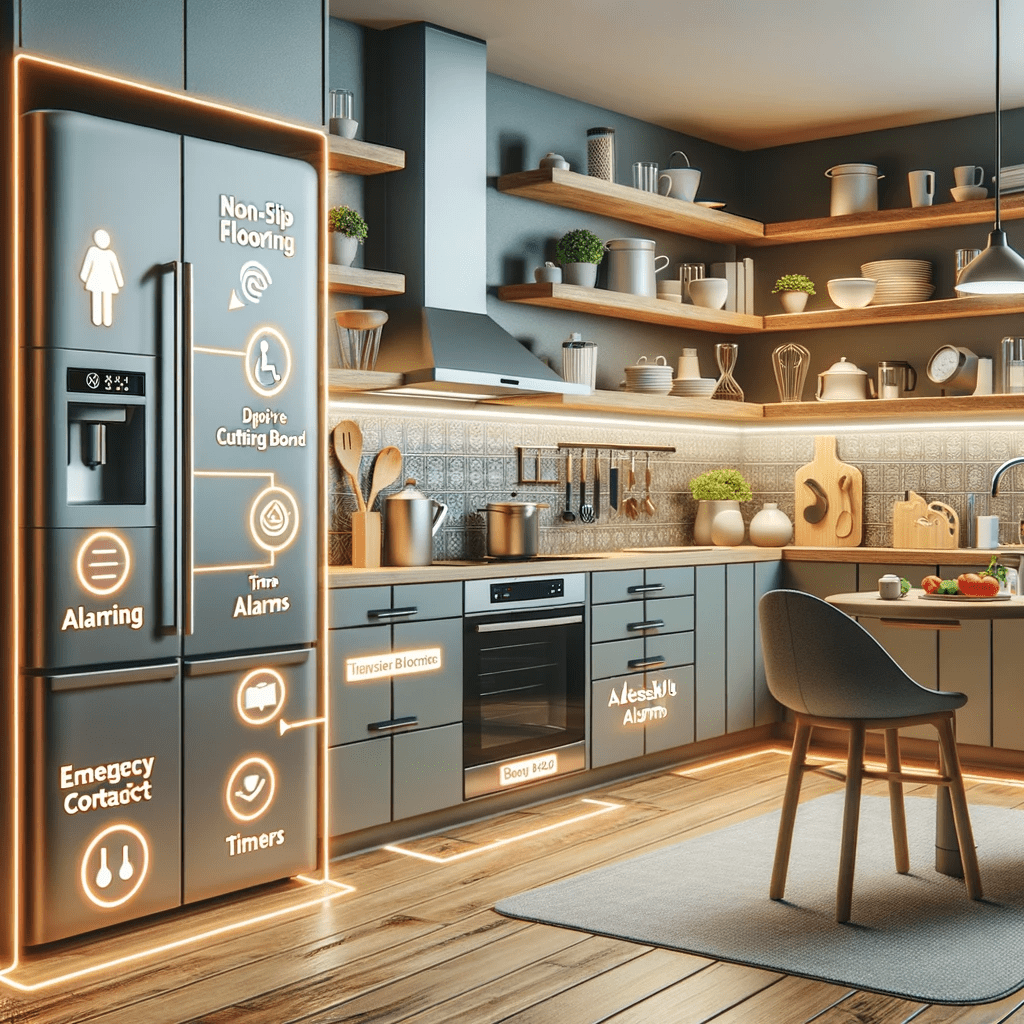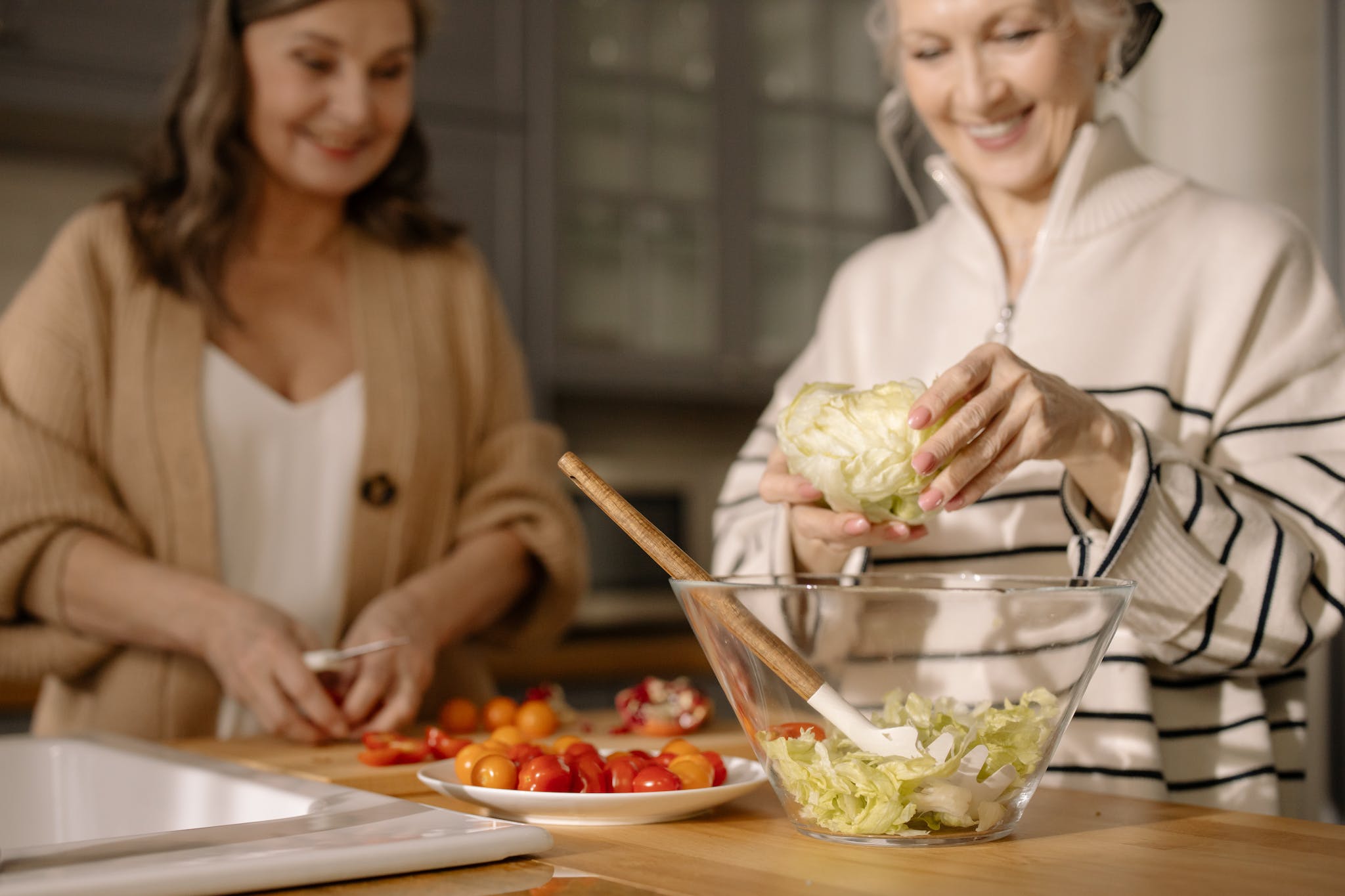Kitchen Aids for Seniors Informative Guide
Introduction to Kitchen Aids for Seniors
Navigating the kitchen can become increasingly challenging as we age. Whether it’s due to limited mobility, reduced strength, or sensory impairments, the simple act of preparing a meal or even just making a cup of tea can seem like a complex task. Despite these challenges, the kitchen remains the heart of many homes, a place where culinary creativity unfolds, and family traditions continue to thrive.
The need for independence and self-sufficiency often doesn’t wane with age, making it imperative to find solutions that allow seniors to perform their kitchen tasks safely and efficiently. This is where kitchen aids come into play. These specialized tools and gadgets are designed to overcome specific challenges, enabling seniors to carry on with their kitchen activities without compromising their safety.
In this comprehensive guide, we aim to provide you with everything you need to know about kitchen aids tailored for seniors. From understanding the unique needs and challenges that seniors face in the kitchen to exploring the best tools available in the market, we’ve got you covered. We’ll also delve into the specifics with in-depth reviews, compare various options, and provide resources that will help you make an informed decision. Let’s embark on this journey to make your kitchen a more accessible and enjoyable space.
Kitchen Safety Measures for Seniors
Navigating the kitchen becomes more than just a matter of skill as we age. Physical limitations, cognitive challenges, and sensory impairments can all create barriers that make standard kitchen tasks not just difficult but also risky. Recognizing these unique needs is the first step in adapting a kitchen environment that is both functional and safe for seniors.
Physical Limitations
The aging process often brings with it a host of physical limitations, such as reduced strength, diminished stamina, and limited mobility. Simple tasks like lifting a pot, cutting vegetables, or even reaching for a jar on a high shelf can become laborious and potentially hazardous. Arthritis, back pain, and poor balance are also common physical ailments that seniors face, which can be exacerbated by standing for prolonged periods or bending down repeatedly.
Adaptive Solutions
- Ergonomic kitchen tools designed for a comfortable grip
- Adjustable or pull-down shelving for easy access
- Lightweight and non-slip mats for added safety
Cognitive Challenges
Cognitive abilities, including memory and attention, can decline with age. For seniors, this can manifest as forgetfulness in turning off appliances or a decrease in the ability to multitask, thereby making cooking a more complex and dangerous activity. Difficulty in following recipe instructions or measuring ingredients can also be stressful and problematic.
Adaptive Solutions
- Digital or auditory timers to remind seniors when to turn off the stove or oven
- Simple-to-use kitchen appliances with one-touch settings
- Color-coded measuring tools for easy identification
Sensory Impairments
Vision and hearing loss are common sensory impairments that significantly impact seniors’ ability to navigate the kitchen safely. Reduced vision can make it difficult to read labels or see stove settings, while hearing impairments may prevent one from hearing timers or alarms. Even the loss of smell and taste can impact the cooking process, as it becomes challenging to gauge flavor or detect spoiled ingredients.
Adaptive Solutions
- High-contrast and large-print labels for easy reading
- Amplified timers and alarms
- Textured or braille markings on kitchen tools and appliances
Understanding these unique challenges is vital for selecting kitchen aids that are truly useful and effective. In the following sections, we will explore various adaptive aids that cater to these specific needs, aiming to enhance both safety and independence in the kitchen for seniors.
Creating a safe and accessible kitchen environment for seniors is not just about choosing the right tools and gadgets; it’s also about implementing a set of safety measures that can prevent accidents and facilitate quick responses in emergencies. This section will cover both general precautions and emergency protocols that are essential for enhancing kitchen safety for seniors.

Non-Slip Flooring
Slippery floors are a significant hazard in any kitchen, but for seniors with balance issues, they can be especially dangerous. Non-slip flooring or mats can make a world of difference in preventing falls. Choose options that are easy to clean and durable enough to withstand kitchen wear and tear.
Accessible Controls
Complex controls on kitchen appliances can be both frustrating and hazardous for seniors. Appliances with simple, easy-to-read controls, preferably with tactile or auditory feedback, are ideal. The controls should also be within easy reach, eliminating the need for stretching or bending.
Proper Lighting
Dim or uneven lighting can result in misjudgments while cutting, cooking, or even walking, leading to accidents. Install bright, even lighting that covers all areas of the kitchen, including countertops and stove areas. Consider adding under-cabinet lighting for better visibility while preparing food.
Emergency Protocols
Fire Safety
Kitchens are prone to fire hazards, and it’s crucial to have protocols in place. Ensure that there is a functional fire extinguisher that is easy to reach and operate. It’s also beneficial to have a fire blanket and a smoke alarm installed.
First-Aid Kits
Accidents can happen even in the safest environments. Having a first-aid kit that is easily accessible can be a lifesaver. Make sure it is stocked with essentials like bandages, antiseptics, and a guide on how to treat basic injuries.
Emergency Contacts
Keep a list of emergency contacts in an easily accessible location, such as on the fridge or inside a cabinet door. This list should include local emergency numbers, family contacts, and healthcare providers. If possible, set up speed dial numbers on a landline phone that’s kept in or near the kitchen.
By taking the time to put these safety measures into practice, seniors and their caregivers can significantly reduce the risk of kitchen-related accidents and emergencies. In the next sections, we will delve deeper into the specific aids that can make these general safety measures even more effective.
Essential Kitchen Aids for Seniors
The right tools can make a world of difference when it comes to safely and efficiently navigating the kitchen. In this section, we’ll explore essential kitchen aids designed specifically to meet the unique needs of seniors. From cutting and food preparation to cooking and reaching items, these aids can significantly improve the quality of life by fostering independence and ensuring safety.

Cutting and Food Preparation Aids For Seniors
Adaptive Knives and Cutting Boards
Standard knives and cutting boards can be challenging to use for seniors with limited strength or mobility issues. Adaptive knives feature ergonomic handles and often require less force to cut through food. Some even come with built-in safety features, such as guards, to protect fingers. Additionally, adaptive cutting boards may include features like suction cups for stability, and grooves or spikes to hold the food in place while cutting.
Recommended Products
- Adaptive Knife for Seniors on Amazon
- ARTHRITIS KNIVES & COOKING UTENSILS
- Cutting Boards for Seniors on Amazon
- 10 Best Cutting Boards, According to Testing
Food Processors For Seniors
For seniors who find it difficult to chop, slice, or dice manually, a food processor can be an invaluable tool. Choose models with straightforward controls and safety locks. Some food processors come with various attachments for different tasks, like shredding or mixing, making them versatile aids in food preparation.
Recommended Products
Cooking Aids For Seniors
Automatic Stirrers
Cooking often requires constant attention and stirring, which can be taxing for seniors. Automatic stirrers do the work for you, allowing you to focus on other tasks. They are particularly helpful for recipes that require long simmering times.
Recommended Products
- Automatic Stirrers for Seniors on Amazon
- We Tried It: An Automatic Pan Stirrer for Hands-Free Cooking
Timer Alarms For Seniors
A simple yet effective aid, timer alarms help prevent overcooking and are particularly beneficial for seniors with cognitive challenges. Choose timers with large, easy-to-read numbers and loud, distinct alarms. Some modern models even come with multiple timer settings for complex recipes.
Recommended Products
Reaching Aids For Seniors
Grabbers
Grabbers are useful tools that can extend your reach, making it easier to get items from high shelves or even pick up something from the floor without bending. Look for models with ergonomic handles and a sturdy grip.
Recommended Products
Pull-Down Shelves For Seniors
Installed inside kitchen cabinets, pull-down shelves can be lowered and raised, providing easy access to stored items without straining or stretching. These are especially useful for upper cabinets, turning hard-to-reach spaces into accessible storage.
Recommended Products
These kitchen aids are not mere conveniences; they are tools of independence that can transform the kitchen into a safer, more accessible space for seniors. In subsequent sections, we will provide in-depth reviews of some of these essential kitchen aids to help you make an informed decision.
Conclusion to Kitchen Aids for Seniors
The kitchen is often described as the heart of the home, a space of culinary creativity and a cornerstone for family traditions. However, as we age, the challenges of navigating this crucial space can turn simple tasks into significant hurdles. Understanding these unique challenges—be it physical limitations, cognitive difficulties, or sensory impairments—is the first step towards making informed choices about the tools and adjustments needed for a safer and more accessible kitchen.
We’ve explored a comprehensive range of options—from non-slip flooring and proper lighting to specialized utensils and gadgets—aimed at making the kitchen a welcoming environment for seniors. These adaptations are not just about safety; they are about enabling independence and enriching the quality of life. By combining general safety measures with specialized kitchen aids, seniors can continue to enjoy the pleasures and freedoms of cooking and food preparation.
With the right set of tools and safety measures, the kitchen can be transformed from a place of potential hazards to a comfortable, accessible, and joyful space. And let’s not forget, that these adaptations are not just for the individual. They offer peace of mind to families and caregivers, knowing that their loved ones can safely navigate one of the most important rooms in the home.
We hope this guide serves as a valuable resource for you or your loved ones, providing the insights needed to make the kitchen a safer and more accessible place for seniors. Because everyone, regardless of age, should be able to enjoy the simple yet profound joys of cooking and gathering in the kitchen.

